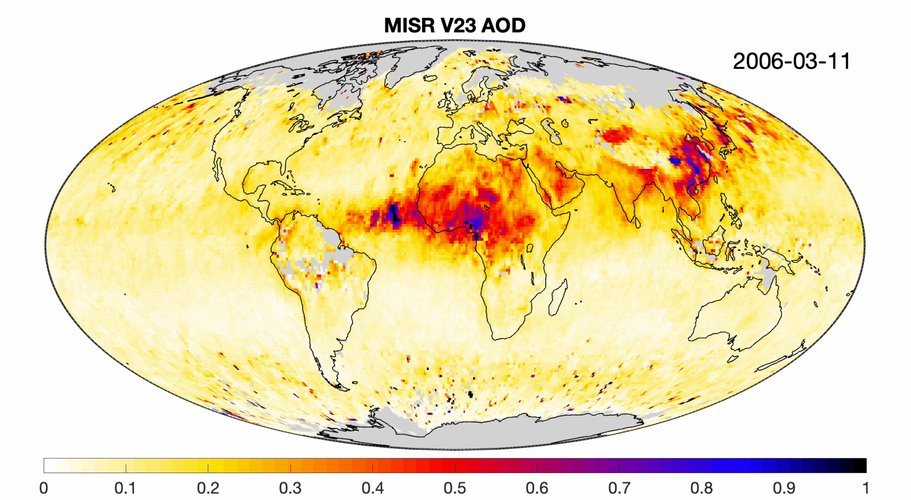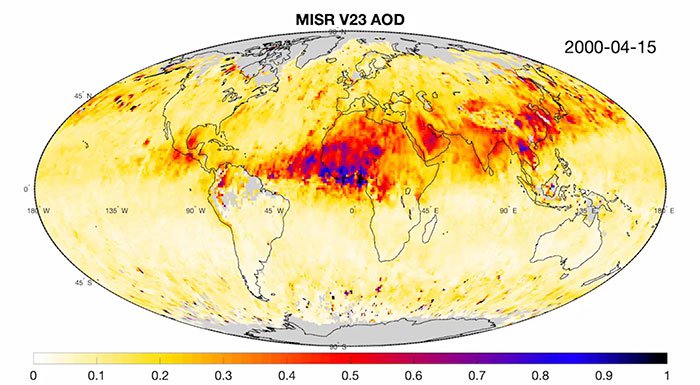Introducing the New MISR Aerosol Product

The animation (viewing options below) shows improvements in the measurements of aerosol optical depth (AOD) from the new aerosol product across the globe, in the form of three-month moving averages.

The animation (viewing options below) shows improvements in the measurements of aerosol optical depth (AOD) from the new aerosol product across the globe, in the form of three-month moving averages.
Animation viewing options (MP4):
- Full sized (228.6 MB)
- Large (41.3 MB)
- Medium (19.4 MB)
- Small (9.6 MB)
Recently, the NASA Jet Propulsion Laboratory (JPL) and NASA Langley Atmospheric Data Center (ASDC) released a new version of the MISR aerosol products, which feature significant improvements to both the underlying science algorithms and the formatting of the data products themselves. A paper is now available in the journal Atmospheric Measurement Techniques that describes the major changes to the new aerosol product and summarizes the performance of the new version versus past iterations. The most significant change in the new version of the per-orbit (or level 2) aerosol product is an improvement from 17.6 kilometer to 4.4 km resolution, which allows users to see more fine detail in the variations of aerosol amount and composition across the globe. In addition, other changes were made to improve the overestimation of aerosol amounts over ocean observed in previous MISR product versions. These improvements can be seen in the above animation, which shows measurements of aerosol optical depth (AOD) from the new aerosol product across the globe, in the form of three-month moving averages. Other changes were made to make both the per-orbit and globally gridded (level 3) aerosol products easier to use. The per-orbit aerosol product is now produced in netCDF format, which is compatible with many data processing programs, including NASA’s free Panoply software, and common modules in programming languages. The new product also removes the stacked-block format used in older MISR data products and adds new geolocation fields. Both the per-orbit and the globally gridded aerosol products have updated, more intuitive field naming conventions. Because the aerosol product is used in generating certain fields in MISR’s land surface product, new versions of MISR’s per-orbit and globally gridded land surface products were also included in this product release. The per-orbit land surface product, which is gridded at 1.1 km horizontal resolution, is also now available in netCDF format. (The globally gridded aerosol and land surface products were already available in this format.) The MISR aerosol products contain information on atmospheric aerosols, including optical depth, single scattering albedo, and Angstrom exponent. Final processing of the new product versions for the entire MISR data record (March 2000 – present) is complete. These and all MISR product offerings are available from NASA’s Atmospheric Science Data Center. Information about these products and details about product quality are available on the MISR Data and Information Table.